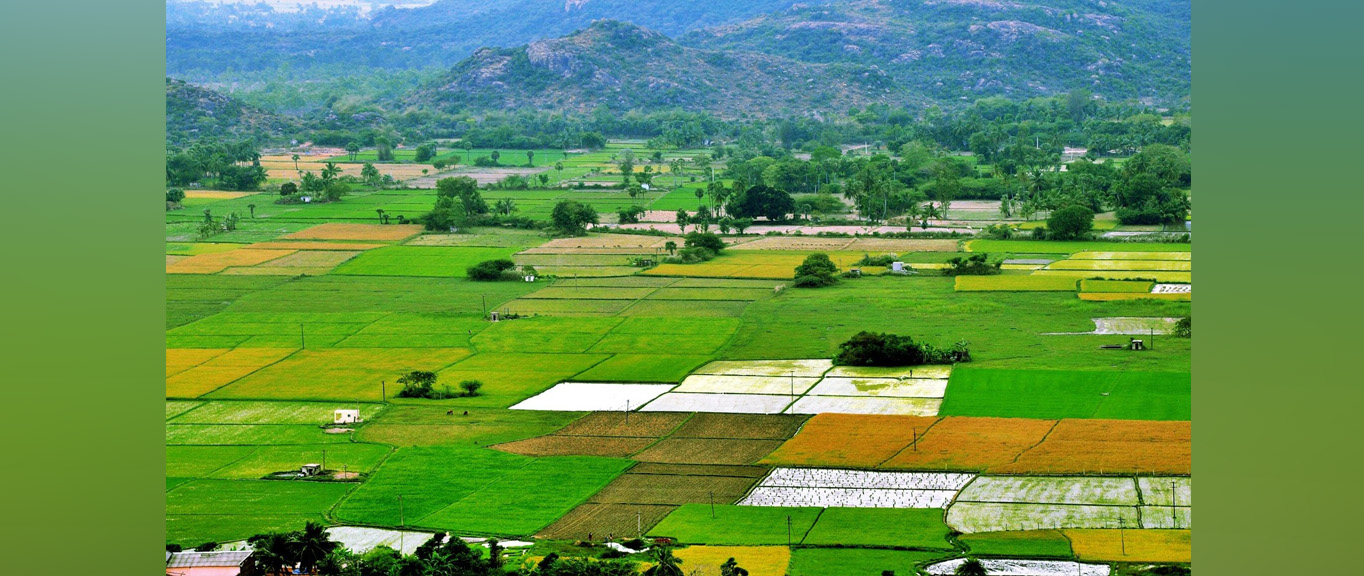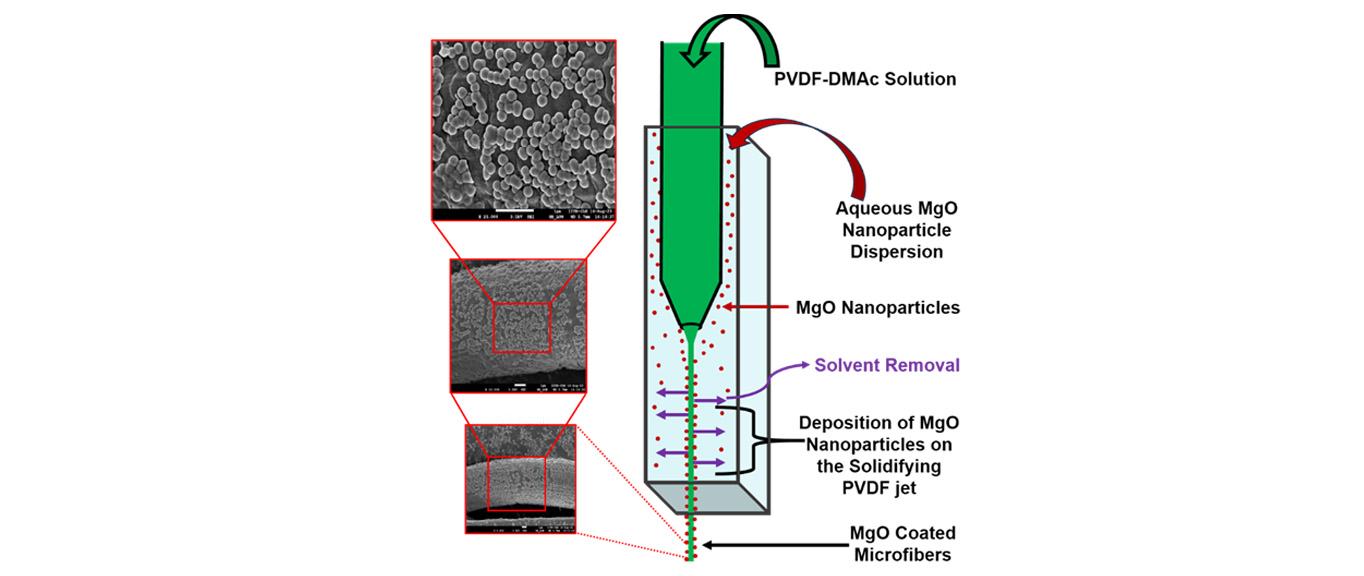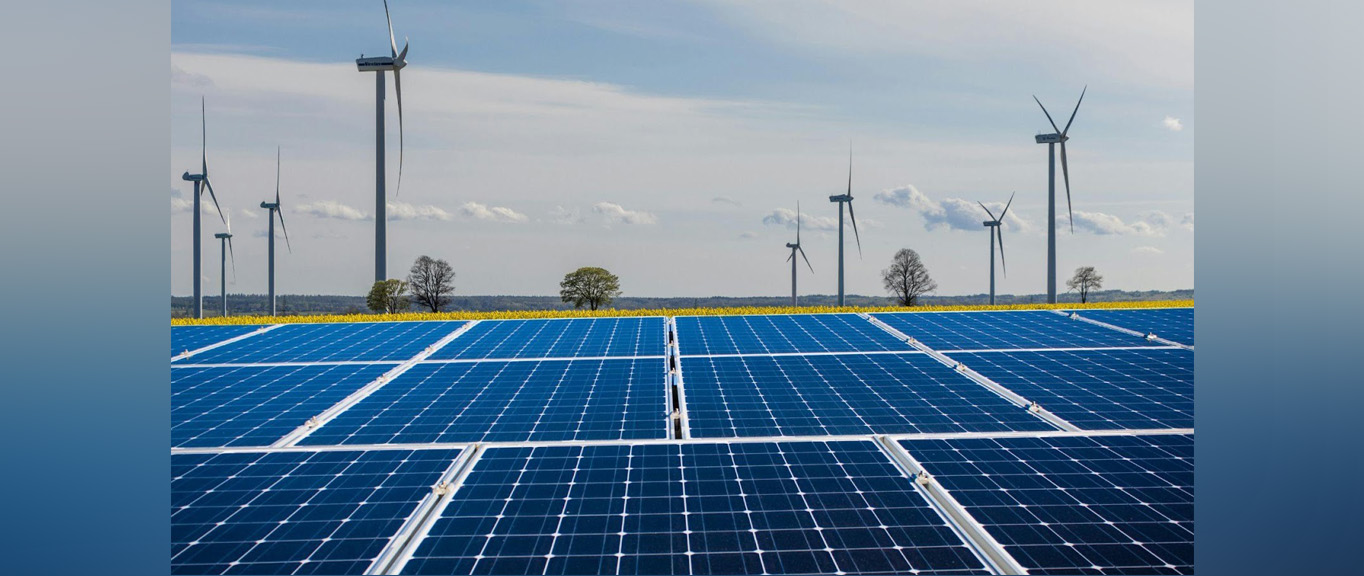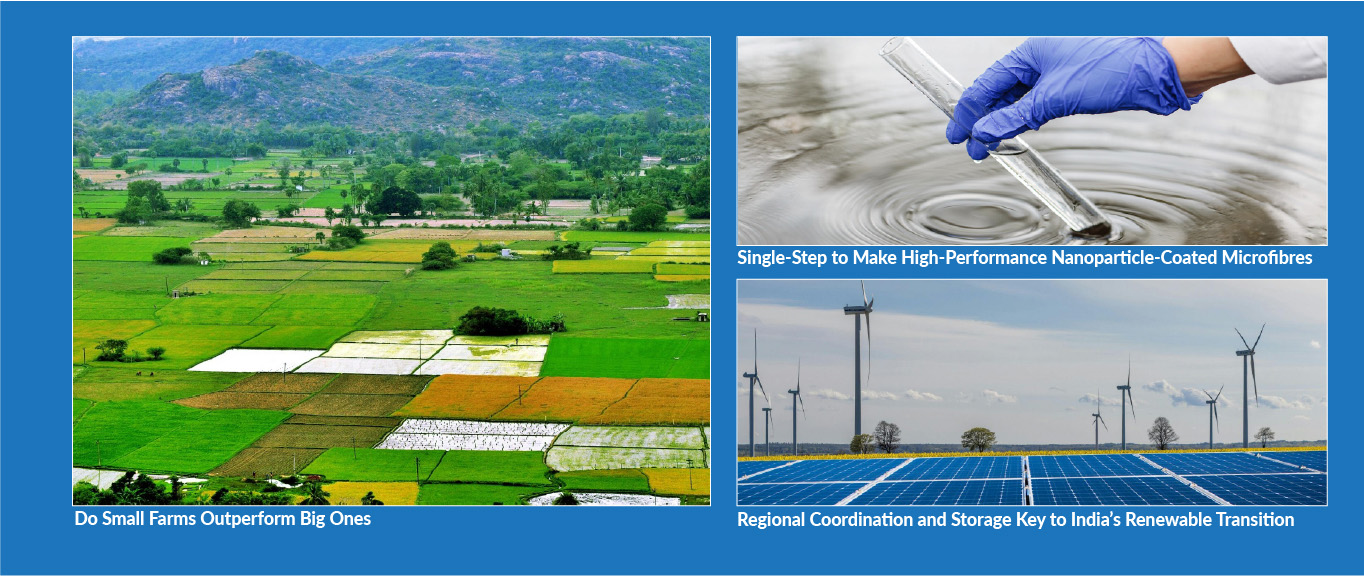Do Small Farms Outperform Big Ones? A Study Reveals Changes Over 40 Years in India

Image Credits: Raj / Flickr / Wikimedia under the CC Attribution 2.0 Generic license (resized)
The following article was originally written by Mr. Deekshith Pinto and published here.
Analysing data from 1975 to 2014, a study examining changes through three waves over 40 years by researchers at IIT Bombay and the University of Hyderabad found that productivity in India’s semi-arid tropics depends less on farm size and more on access to inputs, credit, and markets.
In agriculture, bigger hasn’t always meant better. Studies since the 1960s have shown that smaller farms are generally more productive than large farms in terms of yield per acre. This trend ran contrary to the industrial logic and puzzled researchers and policymakers. Globally, as smallholders and family farms hold nearly 90% of the agricultural land, this trend has been influencing both policies and investments in agriculture for decades.
Now, a new study by researchers at the Indian Institute of Technology Bombay (IIT Bombay) and the University of Hyderabad adds fresh nuance and a few twists to this age-old puzzle. The findings suggest that the inverse farm size-productivity relationship, where the productivity decreases as the farm size increases, was never as pronounced in the semi-arid regions of India.
As agrarian distress dragged on in these regions, the productivity advantage of small farms had faded in the later years (2009-2014).
“The relationship between farm size and farm productivity in the developing world has been debated for several decades. What our findings show is that smallholders still matter greatly for food security and rural stability, but they are increasingly vulnerable due to monocropping and high input costs. We believe that the way forward is to strengthen the capacity of smallholders by improving their access to appropriate technologies, affordable credit, and reliable extension services,” says Prof. Sarthak Gaurav from Shailesh J. Mehta School of Management, IIT Bombay and a coauthor of the study.
For the study, researchers relied on village-level studies from the International Crops Research Institute for the Semi-Arid Tropics (ICRISAT) datasets spanning over four decades from 1975 to 2014. This extensive database is considered one of the world’s longest-running agricultural panel studies from semi-arid tropics, as it tracks farming households across multiple decades. Despite the availability of rich panel data on villages in India’s semi-arid tropics, researchers found that the understanding of the long-term dynamics of farm size and productivity was lacking.
Most non-coastal parts of peninsular India fall in the semi-arid tropics, a region that missed out on the early benefits of the Green Revolution. It is a region where farming depends heavily on erratic rains that typically range between 400 and 800 millimetres annually. While this belt spans multiple states, the ICRISAT data is mainly from three representative zones: Akola, Solapur, and Mahabubnagar. The researchers explain that the unique agroecological and institutional conditions here make it an ideal setting to understand how productivity patterns changed in response to delayed but significant transitions in agriculture.
The new research is possibly the first study on the dynamics of the farm size and productivity in India’s semi-arid tropics. The researchers faced their fair share of challenges analysing the vast ICRISAT datasets. Since the data was collected in different phases, they had to spend months merging household and cultivation data across survey waves. Given the long time frame, data inconsistencies necessitated adjustments to the methodology, including a shift from plot to household-level analysis. The study also relied on external sources, such as the India Meteorology Department’s (IMD) gridded data, to fill the gaps.
The researchers found that small farms were indeed more productive, especially in the early years (1975–84). Earlier studies have offered various explanations for this inverse relationship between farm size and productivity. The most common explanation was that smallholder farmers tend to put in far more intensive family labour, give higher attention, and add more fertilisers per unit compared to larger landholders. However, the new study proves that even during those early years, the productivity scale was not as tilted towards small farms as previously thought.
The inverse advantage of small farms was, in fact, statistically insignificant once the team controlled for the amount of labour and fertiliser that went into each plot. “Both labour and non-labour inputs, such as seeds, fertilisers, and machinery, had a strong positive association with land productivity. This suggests that what matters is not just the size of the land but how effectively that land is cultivated,” explains Prof. Gaurav.
But, there’s a catch. While input intensity boosts gross productivity, it doesn’t necessarily improve profitability. Therefore, even though smallholder farmers may have seen higher yields per acre, the needle on profit per acre may not have moved either way. Furthermore, for small farmers, crop diversification often acts as an insurance against weather shocks and market volatility. But the study shows that it actually reduces both productivity and technical efficiency. These results challenge the long-held assumption that small farms are more productive, highlighting why they continue to struggle financially.
Another important result from the study is that the inverse pattern has weakened in recent years, but not fully reversed, despite extensive mechanisation. “We expected that with rising farm mechanisation and better access to markets, the relationship might turn positive by the later years. But even by 2014, the relationship had only shifted to an insignificant positive and had not fully flipped. That persistence tells us something important about how uneven or slow structural change can be in regions like the semi-arid tropics,” emphasises Prof. Gaurav.
In a country where small farmers with less than two hectares comprise nearly half of the nation’s farming population, the new study’s findings have far-reaching implications in several aspects, including food security, poverty alleviation, sustainability, agriculture policies, and land reforms in the agricultural sector. Among multiple policy insights, Prof. Gaurav recommends prioritising improvements in smallholders’ collective capacity to access markets and inputs. “Many of the challenges we observed were not just about farm size but about weak linkages to input and output markets, and limited access to knowledge or infrastructure. Helping smallholders organise into collectives or producer groups can enable them to pool resources, adopt agroecological practices, and negotiate better prices,” explains Prof. Gaurav.
The study has its limitations, from its reliance on self-reported data from farmers to a limited focus on one particular agroecological zone. However, the findings prove that the farm size-productivity relationship is complex, context-dependent, and much weaker than previously thought. This doesn’t mean small farmers are losing their edge, but underscores the crucial support they need to adapt. The challenge lies in preserving the benefits of small farms, such as employment generation and food security, while enhancing their economic viability.
*********************************************************
The original academic article, titled Dynamics of Farm Size-Productivity Relationship: Evidence From Semi-Arid Tropics of India, 1975–2014 was written by researchers from IIT Bombay and published in the journal Agricultural Economics.
The original paper can be found here.
Single-Step Method to Make High-Performance Nanoparticle-Coated Microfibres

Image Credits: Freepix
The following article was originally written by Ms. Divyapriya Chandrasekaran and published here.
The IIT Bombay method to coat microfibres with nanoparticles, while they are forming, ensures uniform coating and better performance
Microfibre-based water filters are a good option for household water filtering as they can filter out germs and pollutants, are durable, and offer a high retention capacity. Adding an appropriate nanoparticle coating can make the microfibres useful for diverse purposes, such as absorbing toxic heavy metals and dyes. Choose a suitable nanoparticle coating, and they can make ideal wound dressings as well.
In the conventional method to coat microfibres, previously spun threads are dipped into the nanoparticle dispersion. The method needs bulky equipment, is tedious, and produces low-performing microfibres. Since the flow of nanoparticles cannot be controlled, nanoparticles form clumps on the microfibre, leaving the rest bare. The uneven nanoparticle coating allows sediment and particulates to pass through the filters easily, making them inefficient.
Researchers from the Department of Chemical Engineering at the Indian Institute of Technology Bombay (IIT Bombay), jointly led by Prof. Venkat Gundabala and Prof. Rajdip Bandyopadhyaya, have devised a microfluidic technique to produce high-performance nanoparticle-coated microfibres in a single step. In their recent study, the researchers demonstrated that the single-step method can create microfibres uniformly coated with nanoparticles, such as Magnesium Oxide (MgO) nanoparticles synthesised by them, and used in this work. The researchers then also tested these MgO-coated microfibres for their performance in filtering heavy metals, such as lead, cadmium and arsenic, from water.
Their setup uses two glass tubes: the inner 0.7 mm diameter capillary tube, in which the polymer, polyvinylidene fluoride (PVDF), dissolved in Dimethylacetamide (DMAc) solvent, is pushed using a syringe pump. Simultaneously, in the outer tube with a cross-section of 1 mm square, another syringe pump adds the nanoparticle dispersion. The researchers regulated the concentration and flow of polymer and nanoparticle dispersion within the glass tubes, ensuring fibre formation and uniform coating at once. The glass tubes act as a microfluidic device, allowing precise control over the liquids. As the polymer exits the capillary tube as a jet, it comes in contact with the water in the aqueous nanoparticle dispersion co-flowing with the jet. The DMAc solvent disperses into water, converting the liquid polymer jet into a solid fibre. This single-step method allows the formation of microfibres and coats them with the desired nanoparticles at once.

Credits: Authors of the research paper
“Magnesium oxide (MgO) nanoparticles stick to the fibre surface through favourable interactions – with positively charged MgO having a strong attraction to the negatively charged PVDF polymer. Further, the water carrying the nanoparticles flows around the polymer jet throughout, with the nanoparticles continuously and uniformly surrounding it; this is key to achieving uniform nanoparticle coating on the fibre,” explains Prof. Gundabala.
The researchers tested the MgO-coated PVDF fibres for removing heavy metals from water samples with known concentrations of lead, cadmium and arsenic. When water passes through the filter, nanoparticles trap metals through electrostatic attraction or ion exchange, allowing clean water to pass through. The results show the potential for scaling up this method for treating household water and groundwater.
“Nanomaterial-coated fibres can be packed into filter cartridges or columns that can be used in under-sink, whole-house filtration units, or in portable water purification units and modular filters,” highlights Prof. Bandyopadhyaya.
The microfibres’ applications extend beyond water purification. Different types of fibres, such as quantum dot-coated (small semiconductor particle) fibres, can be used as sensors to detect pollutants. Titanium oxide, copper, or silver nanoparticles have excellent antibacterial properties and can be used in healing bandages and food packaging. Fibres coated with drugs can be used to deliver medicine to specific areas inside the body, promoting tissue growth. Nanoparticles can also be used to remove microplastics and other organic pollutants.
“When fibres are coated with nanomaterials, such as magnetic iron oxide nanoparticles, or graphene oxide rods, they are efficient in entrapping microplastics. Similarly, fibres coated with imine-functionalised silica nanoparticles, nickel oxide or zinc oxide nanoparticles are excellent for entrapping organic pollutants,” signs off Prof. Gundabala.
*********************************************************
The original academic article, titled Single-Step Microfluidics-Based Method for Fabrication of Nanoparticle-Coated Functional Microfibers was written by researchers from IIT Bombay and published in the journal ACS Applied Materials & Interfaces, Vol 17/Issue 12.
The original paper can be found here.
Regional Coordination and Phased Storage Growth are Crucial for India’s Renewable Energy Transition

The following article was originally written by Mr. Dennis C. Joy and published here.
Researchers developed a granular power generation and grid operations model to evaluate pathways to India’s 2030 renewable energy mandate. The study shows that regional coordination and flexible compliance mechanisms are key, along with measured storage and a phased coal transition, balancing flexibility, affordability, and reliability for India’s clean energy transition.
India, a nation experiencing rapid economic growth, is also racing against time to meet its ambitious climate goals. With over 50% non-fossil fuel installed capacity already achieved and a mandate from the Ministry of Power for a 43.33% renewable energy (RE) consumption share, the country is poised for a significant energy transformation. According to the International Renewable Energy Agency (IRENA), the country ranks 4th globally in terms of renewable energy capacity and 3rd in solar energy capacity. However, for a country of over a billion people, transitioning to clean energy without breaking the bank or compromising reliability will be a complex challenge.
To forge a path ahead, researchers from the Indian Institute of Technology Bombay (IIT Bombay), the National Institute of Advanced Studies (NIAS), and the Indian Institute of Technology Delhi (IIT Delhi) have developed a comprehensive roadmap for India’s road to a sustainable power system. Their new computational model provides scenario-based cost estimates for meeting the RE mandate and can guide optimisation of power plant planning and operations.
“Our study brings a novel, high-resolution approach to modelling India’s fast-evolving power system, especially as it faces the practical challenge of rapidly scaling up Renewable Energy,” remarks Nikhil Thejesh Venkataramana, a Prime Minister’s Research Fellow at IIT Bombay, who led the study under the guidance of Prof. Venkatasailanathan Ramadesigan (IIT Bombay), Prof. Tejal Kanitkar (NIAS), and Prof. Rangan Banerjee (IIT Delhi).
To successfully model the path to meeting our energy requirements and cross-state power flows, two primary aspects must be considered: the available and evolving infrastructure, and the investment and operating costs of running a system. The researchers developed a computational model, known as the capacity-expansion and economic-dispatch model, which accounted for both these aspects. The capacity-expansion part of their model determines the optimal mix and quantity of new power plants and battery storage required to meet the projected electricity demand at the lowest cost, while satisfying the RE mandate.
Then, the economic-dispatch part of the model, working in incredibly fine detail, schedules every 15 minutes which power plants should run and how much electricity they generate. It can operationalise power plants to meet demand at the lowest possible cost, while respecting their operational limits. The integration of these two parts means that decisions about building new infrastructure are directly informed by how efficiently that infrastructure can be operated in real-time.
“Our model integrates capacity expansion and economic dispatch into a unified optimisation framework, designed to simulate and optimise the power system with high granularity. It is built using a mathematical programming language called GAMS (General Algebraic Modelling System),” explains Nikhil.
The study focused on nine states across India’s Western and Southern Regions. According to Nikhil, these states were selected since “these regions collectively represent over half of the nation’s electricity demand (~56% or ~905 TeraWatthours in FY 2023-24), 42% of its population (592 million in 2023), and 59% of India’s Gross Domestic Product, making our study highly representative of India’s overall energy landscape”. Their model focuses on the target year 2030, building from a baseline year of 2022–23.
To build their model, the researchers collected granular state- and unit-level power demand and generation data at a 15-minute temporal resolution. “We secured this detailed data through collaboration with Western Region Load Dispatch Centre (WRLDC) and National Load Dispatch Centre (NLDC) after formalising a Memorandum of Understanding with Grid-India (formerly POSOCO),” says Nikhil.
This level of granularity in the data is crucial because renewable energy sources are notoriously intermittent and dependent on weather conditions. By tracking these rapid changes, the model can accurately represent how solar and wind power fluctuate, how thermal plants operate, and how many flexible resources, such as batteries and transmission lines, are required.
The IIT Bombay-NIAS study revealed that the answer to India’s clean energy future lies in coordinated planning across states and a strategic approach to energy storage. The researchers found that by allowing electricity to flow more freely between states and regions, India can significantly reduce overall system costs while integrating a far greater amount of renewable energy. The analysis revealed that transitioning from an isolated, state-wise dispatch to coordinated operation across the Western and Southern regions reduces the total installed capacity requirement from 314 GW to 288 GW. This reduction was based on a 20% Renewable Purchase Obligation (RPO), a government mandate that obligates entities, such as distribution companies and large consumers, to purchase a minimum percentage of their total electricity consumption from renewable sources.
This coordination among states also leads to substantial cost savings, cutting overall system costs by approximately ₹12 lakh crores (around USD 14 billion) by 2030, the target year. The remarkable efficiency comes from the ability to pool diverse electricity demands and renewable resources. For instance, different states have different peak demand times, and by linking them, the overall grid experiences fewer extreme highs and lows. Resource-rich states, like Tamil Nadu for wind or Gujarat for solar, can generate excess clean energy and send it to states that need it, making the best use of available renewables and reducing the need for each state to build costly backup power plants.
“The scale of benefits from regional pooling was surprising. Inter- and intra-regional coordination led to 10–15% system cost savings and a reduction of 20–30 GW in installed capacity. These outcomes underscore the transformative impact of cooperative planning and transmission-enabled flexibility,” remarks Nikhil.
The study also highlights a crucial balancing act required to scale renewable energy: the trade-off between coal-based generation and battery storage. If new coal and hydropower capacity are limited to only those projects already under construction, then integrating a high percentage of renewables would require a massive amount of battery storage for the renewable energy generated. The model predicts that, for around 29–41% RE integration, battery storage would need to be scaled by up to 125 GW in the Western Region and 70 GW in the Southern Region.
While technically possible, such a rapid scale-up of batteries by 2030 might not be the most practical or affordable solution for India, given current costs.
According to Nikhil, “The real question may not be how to scale battery deployment rapidly before 2030, but how to sequence a gradual phase-down of coal alongside a paced and affordable increase in battery storage capacity over the medium-to-long term.”
The researchers propose a realistic pathway that involves a strategic, gradual phase-down of older, less efficient coal plants, incremental growth of battery storage in strategic locations, and continued efforts to reduce battery costs through domestic manufacturing and global advancements.
By focusing on India’s updated renewable energy consumption mandate and explicitly modelling inter-regional transmission, this study provides policymakers with more practical and immediate insights. The model also highlights the current economic limitations of the nation, suggesting the need for substantial cost reductions and policy support in RE storage expansion. Nevertheless, by systematically modelling the trade-offs between different energy sources and the benefits of regional cooperation, the study provides a way for India to meet its ambitious renewable energy targets and ensure an energy secure future.
“Our detailed and policy-relevant approach provides a powerful tool for planning India’s sustainable energy future, offering insights into how coordinated capacity expansion, targeted storage deployment, and enhanced transmission infrastructure can collectively foster a cost-effective, reliable, and environmentally sound power system”, concludes Nikhil.
*********************************************************
The original academic article, titled Optimizing Renewable Energy Integration Pathways: Inter-Regional Coordination And Storage in India’s Power Sector was written by researchers from IIT Bombay and published in the journal Applied Energy, Volume 394.
The original paper can be found here.

